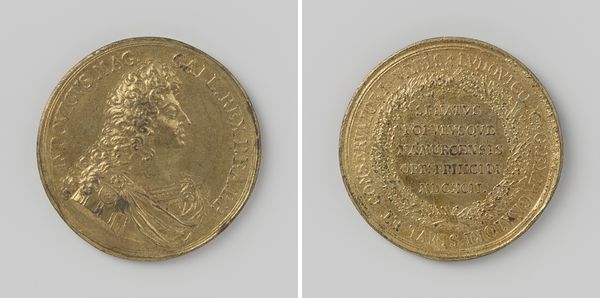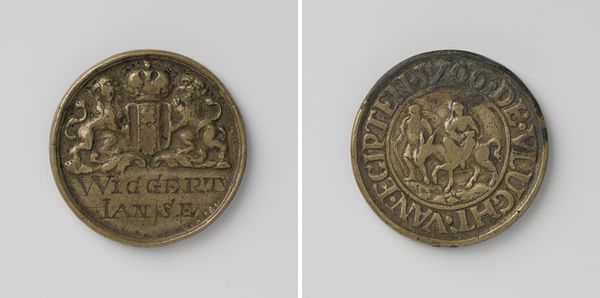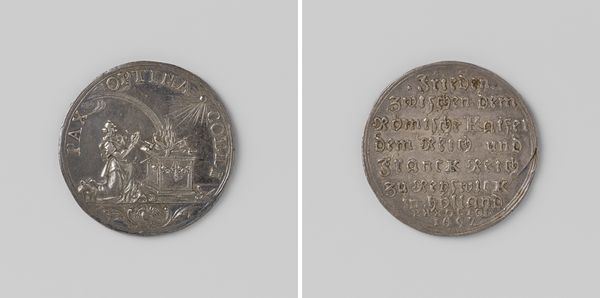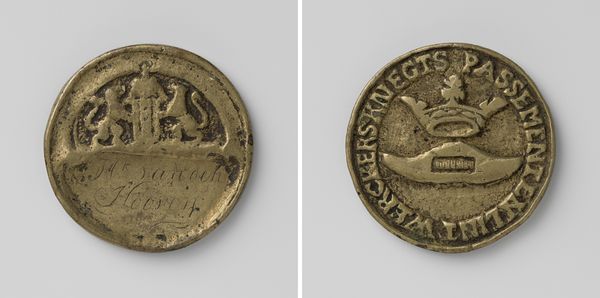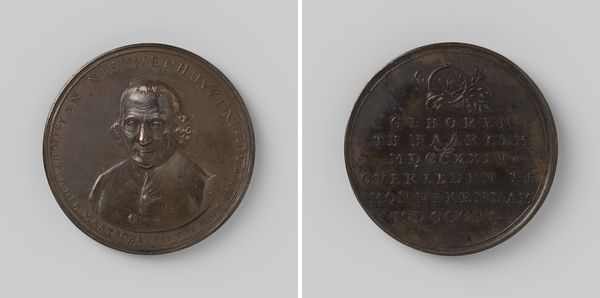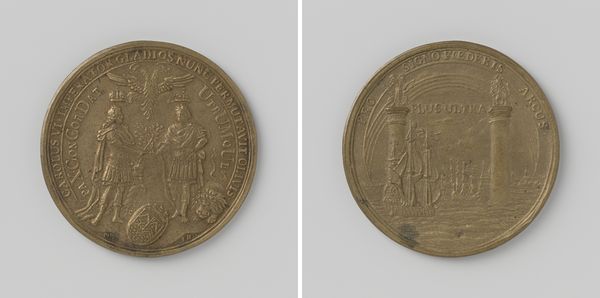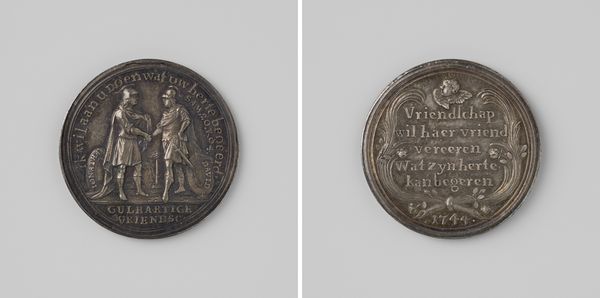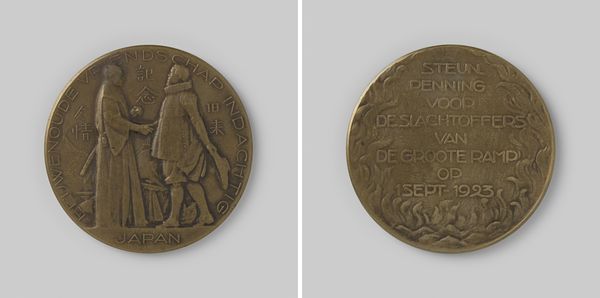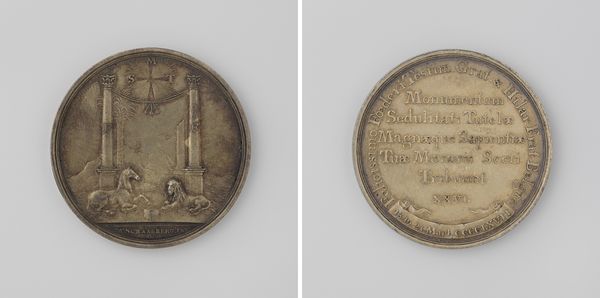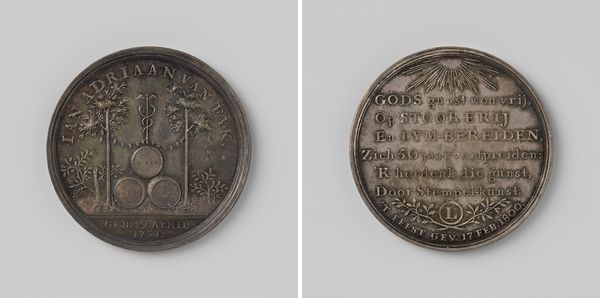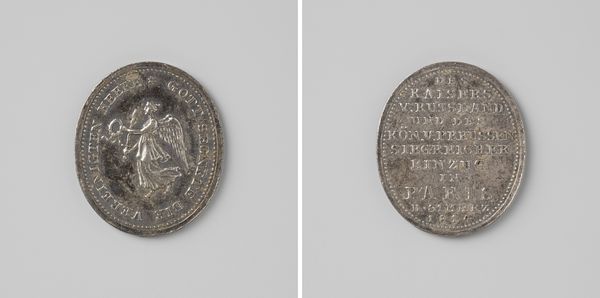
metal, relief, bronze, sculpture
#
dutch-golden-age
#
metal
#
relief
#
bronze
#
sculpture
#
history-painting
Dimensions: diameter 4.1 cm, weight 18.11 gr
Copyright: Rijks Museum: Open Domain
Curator: Here we have a bronze commemorative medal, dating back to 1764, created by B.W. Meusies. The title is rather descriptive: "Burgerweeshuis te Amsterdam," which translates to the Amsterdam Orphanage. Editor: It's such a tangible piece of history, isn’t it? I am immediately struck by the contrast. The orphanage sounds somber, but the medal feels like it wants to celebrate or commemorate something. The style, the color of the metal, it's hard not to be a little charmed. Curator: That contrast is crucial. Institutions often commissioned such objects to broadcast an image of benevolent power. Look closely—on one side, we see two figures flanking a coat of arms surmounted by a large crown. Editor: Yes, there's a real formality to the figures flanking the coat of arms—they present the institution as respectable. But there is more to this piece, right? The other side provides more context. Curator: Exactly. Inscribed around the perimeter, the Dutch text reads “Teken aan de Burgerweeskinderen van Amsterdam”, or “Token for the Orphan Children of Amsterdam”. Inside this border are the artist’s initials “B W”, the family name “Meusies”, and the year it was cast: 1764. Editor: So these medals were more than just decorative or commemorative items; they had a purpose. How do you think the recipients experienced it? Curator: Knowing these were likely distributed to orphans gives us a whole other avenue of examination. Were they a mark of pride? A subtle reminder of dependency? Were these merely ceremonial? I cannot answer these, of course, but the artifact brings these to light. Editor: It's that tension – the blend of institutional power and personal experience – that I find so powerful. This piece allows us to think about both simultaneously. Thanks to Meusies’ eye for the fine line, the kids were granted something both celebratory and deeply melancholic. Curator: It gives a focus point on institutions that had to step up for vulnerable children. These medallions create a dialogue between history and current care for such institutions, encouraging conversation and critical thinking.
Comments
No comments
Be the first to comment and join the conversation on the ultimate creative platform.
